There are 14 different types in the Unified Modeling Language (UML), and one of them is the use case diagram. All of them serve different purposes and will help you in different aspects of your system’s development. For instance, the use case diagram shows how a user will interact with a system. By doing this, the diagram shows you what each user will want to perform through the system.
Right now, you can create a use case diagram online through some UML diagram creators. In this article, we will explain what it is and how you can create a use case diagram online.
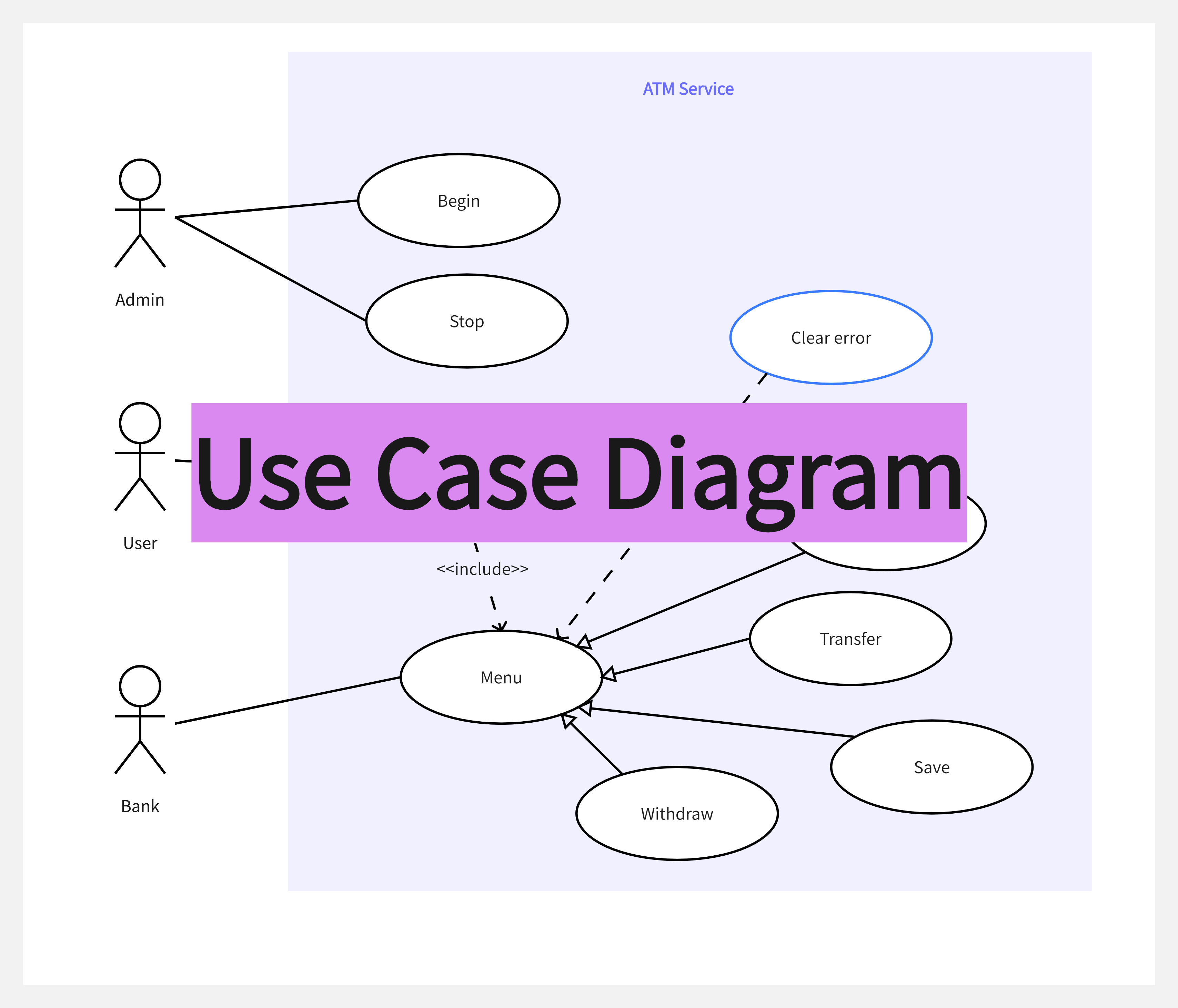
What Is a Use Case Diagram
A UML use case diagram is a behavioral diagram that depicts the way that users can interact with the system. To craft a use case diagram online, you must create the basic user types, which are also referred to as actors. Then, you must include the use cases by placing them in circles or ellipses. The use case diagram online is completed once you connect the actors to their corresponding use cases, also highlighting the extended relationships.
It is important to note that the use case diagram doesn’t focus on the order of the actions, and so it doesn’t feature their sequence. Moreover, the use case diagram online doesn’t get into too much detail as it aims to give you an overview of the system. In reality, it works as a blueprint that can remind you of the goals you need to keep in mind.
Why Draw a Use Case Diagram Online
Chances are that you are already using numerous diagrams for your project. In this case, you might be wondering why you would also need to draw a use case diagram online. In reality, all diagrams you use help you with different elements of the process. Therefore, a use case diagram also has a particular purpose that makes it worth incorporating into your project.
The main purposes of the use case diagram online are the following:
- The use case diagram works as a blueprint for the system,
- It highlights the specific needs of its different users,
- It depicts the system’s context,
- It combines both the internal and the external elements of the system,
- It can show how the different users might interact with one another.
Pros and Cons of a Use Case Diagram
To ensure that you have made the right choice for your project, you need to take a look at the advantages and disadvantages of the use case diagram online. Just like every other method, a use case diagram will benefit your team. However, it will also bring you some negatives that you must consider.
Components and Terminologies of Use Case Diagram
Now you realize how a use case diagram online is a tool that can help you with your project. Before you are in a position to create one though, you must learn about its components. The use case diagram has these elements:
- Boundary of the System – this element is a large rectangular that indicates the boundaries of the system. This can either be the whole application or a single function. The latter is particularly important when you want to create a use case diagram online for a complex system that might target different users for each function.

- Actors – an actor represents a different role that the system’s user can have. It is indicated by a small stick figure that is placed outside the boundaries of the system. You can add as many actors as you need.
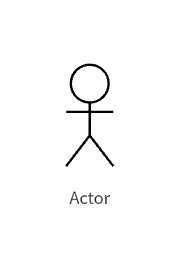
- Use Cases – this element of the use case diagram is the use cases, which appear as oval shapes. This notation represents the different functions of the system. Every actor needs to be connected to at least one use case. Nevertheless, there can be use cases that aren’t connected to anything.
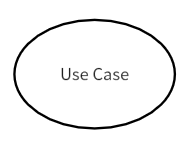
- Communication Links – this element of the use case diagram online indicates to which use cases an actor is connected.
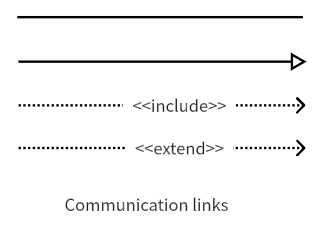
How to Draw a Use Case Diagram Online
If you want to create a use case diagram, you must find a platform developed for this task. Boardmix is an online collaborative tool that makes the creation of a use case diagram online simple and easy. This is because you gain access to premade components and templates for all sorts of diagrams. Here are the steps for creating a use case diagram using Boardmix:

Step 1 – Create a Shape for All Roles and User Types
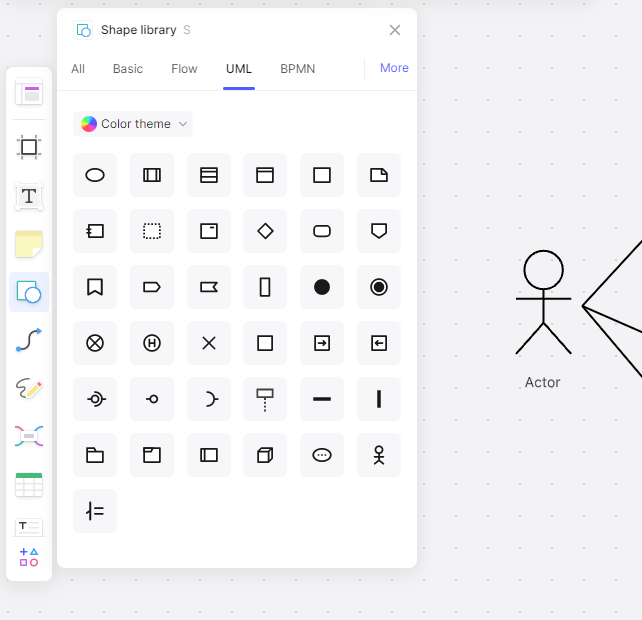
The first step is to identify the different user types that will interact with your system. Once you have determined that, you can place the premade component on your use case diagram.
Step 2 – Create the Use Case Elements
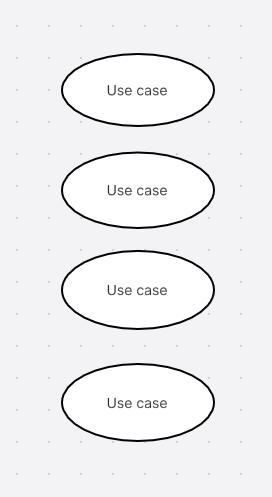
The next step is to create the use case components. The notation of this element is an oval shape, which you can easily find in Boardmix. Name each use case to indicate its function.
Step 3 – Create the Connections Between Actors and Use Cases
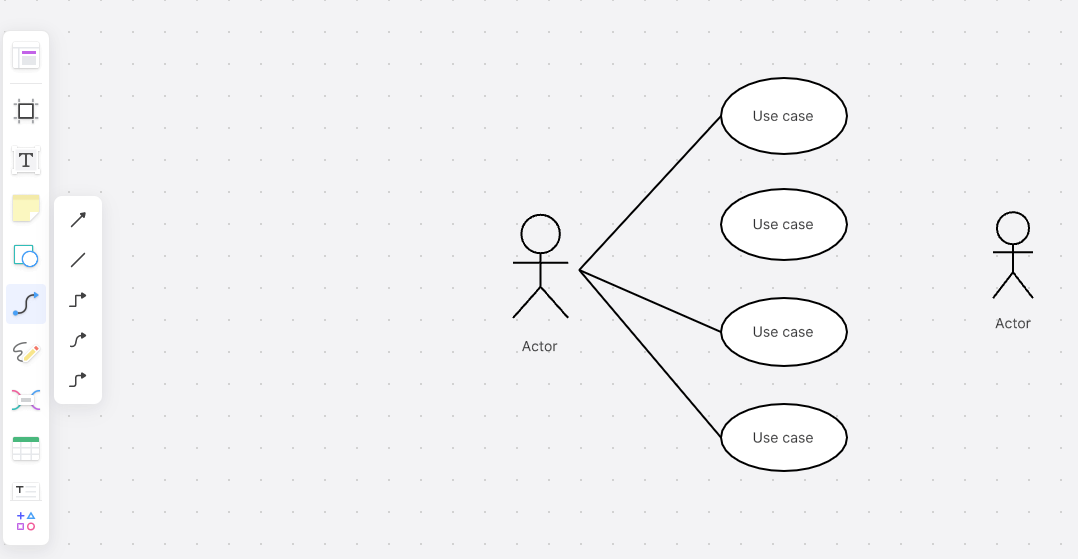
In the following step, you must connect each actor to the appropriate use cases. Boardmix offers you both straight lines and arrows to make the process easy.
Step 4 – Set the Boundaries of the System
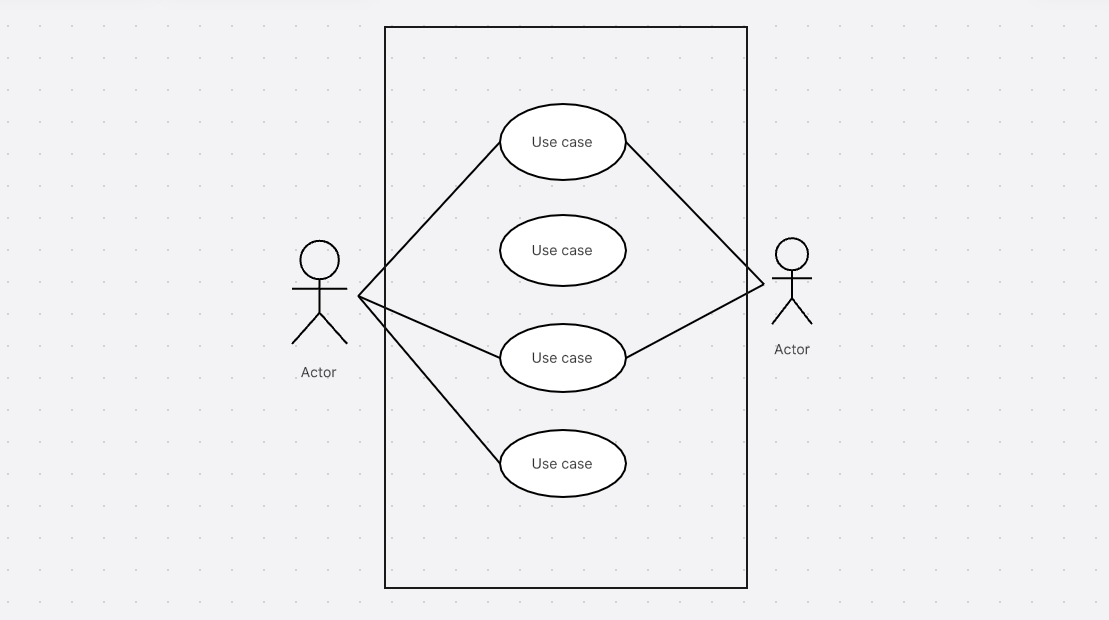
Then, you need to draw the boundary of the system. This includes all the use cases that take place within the system or the particular system function.
Step 5 – Share Your UML Diagram
Finally, you are ready to share your use case diagram with the rest of your team members. Everyone can view the diagram and make changes if need be. All changes become visible in real time.
The Bottom Line
A use case diagram online is another UML diagram that will contribute to the successful completion of your project. Right now, you can create this diagram in Boardmix, which is the top web-based platform for the task. Discover the potential of the tool by creating collaborative whiteboards for every process right now!









